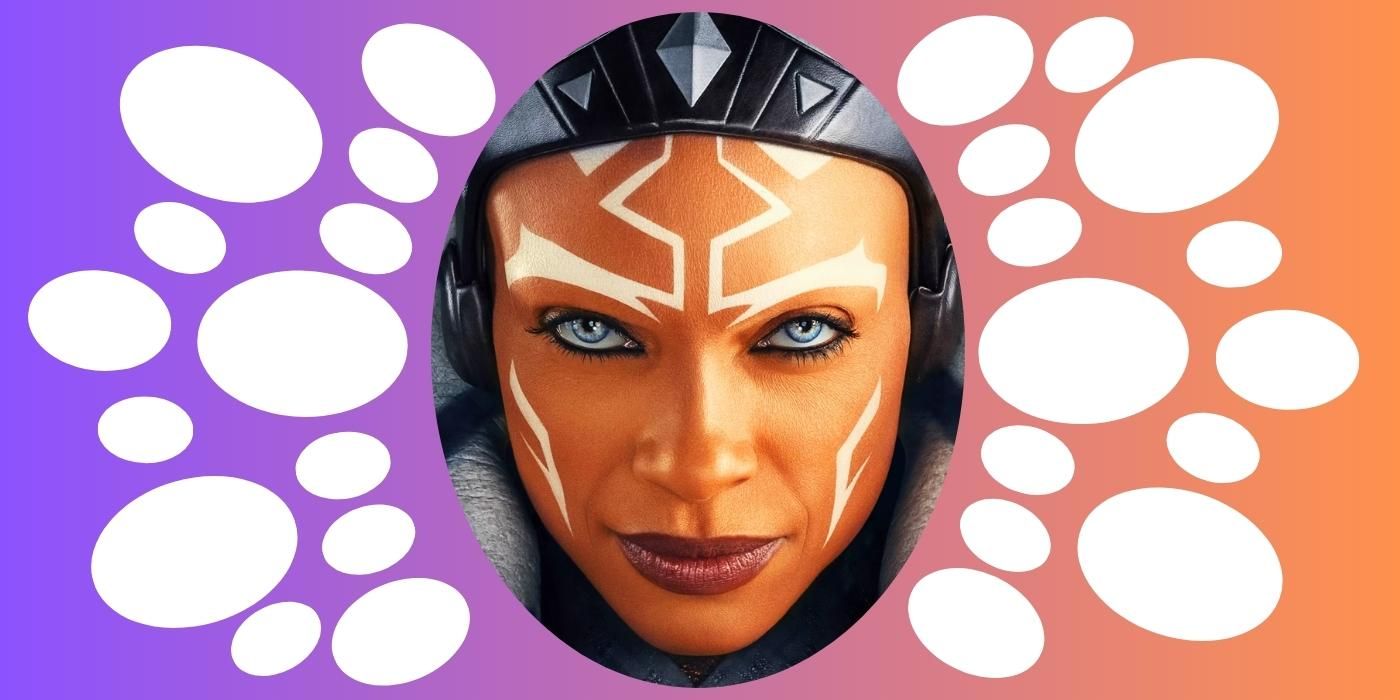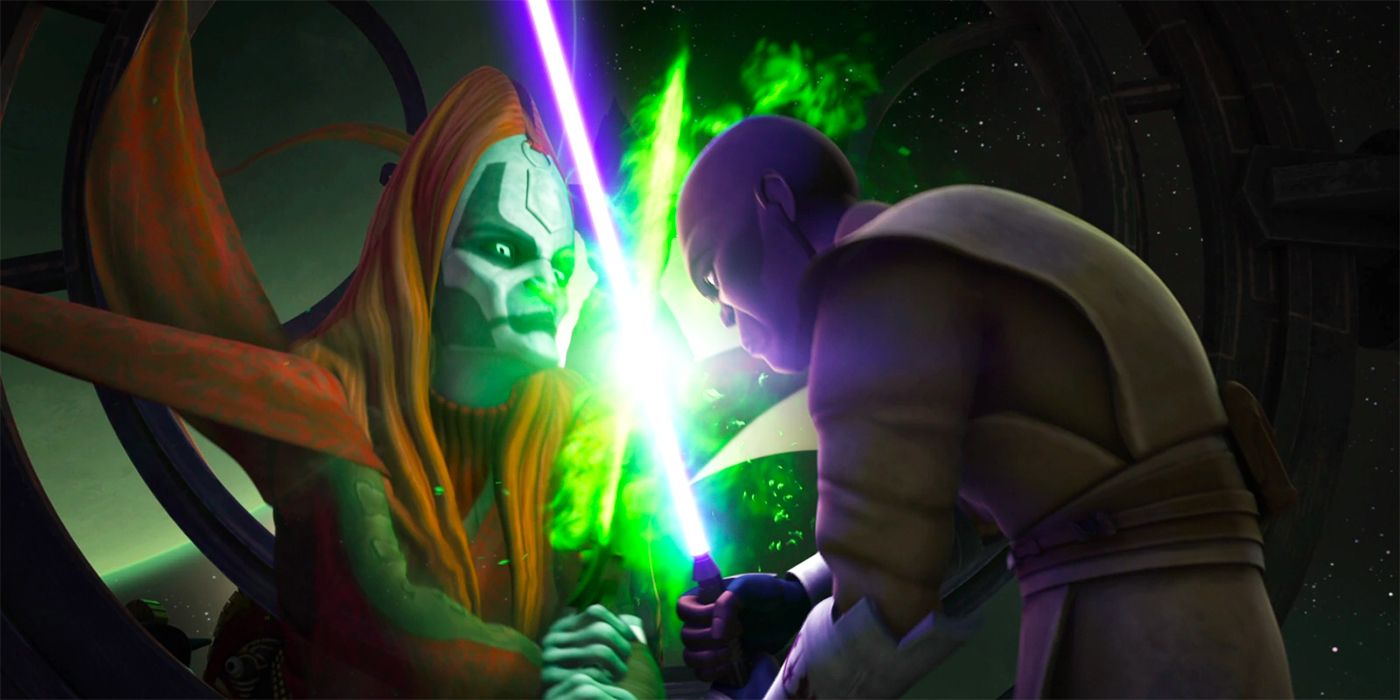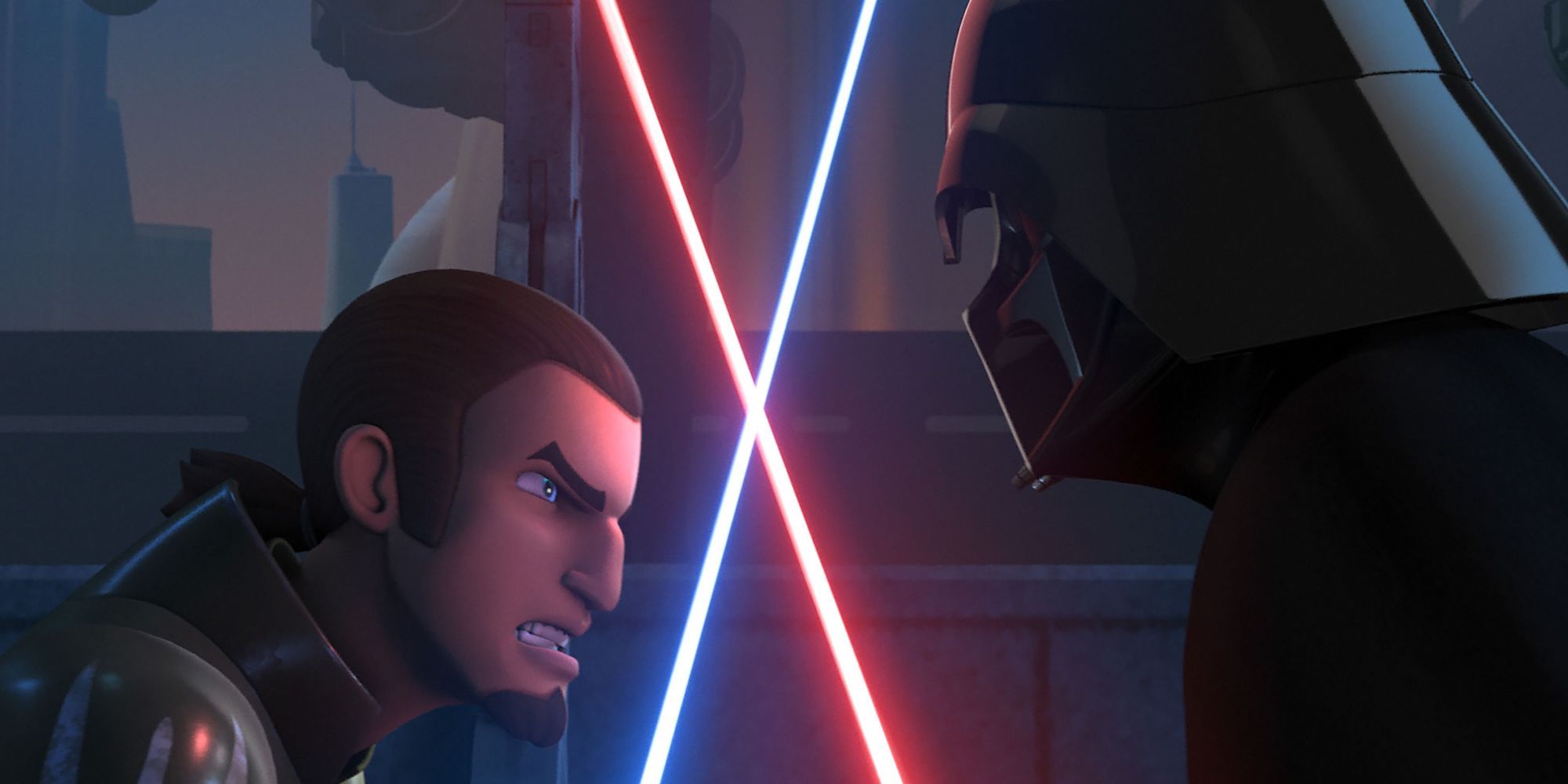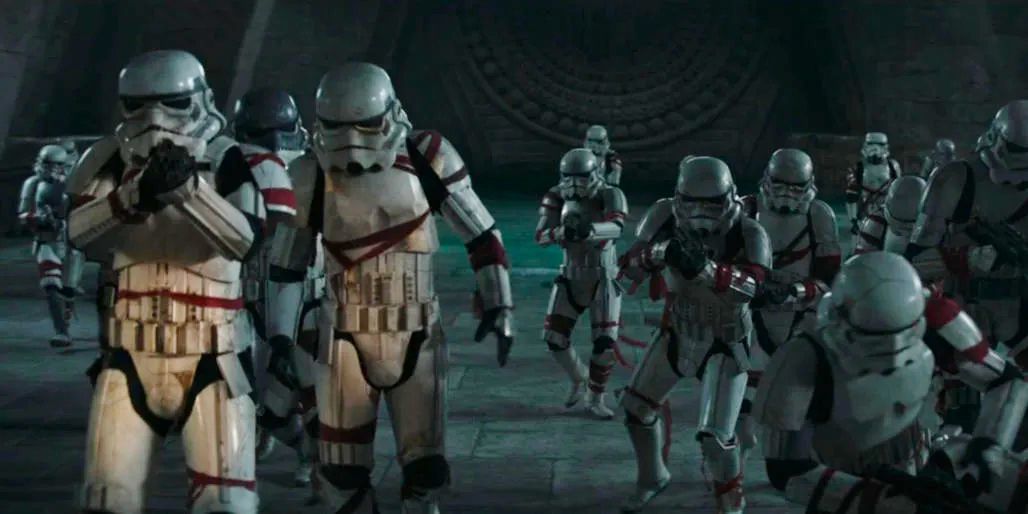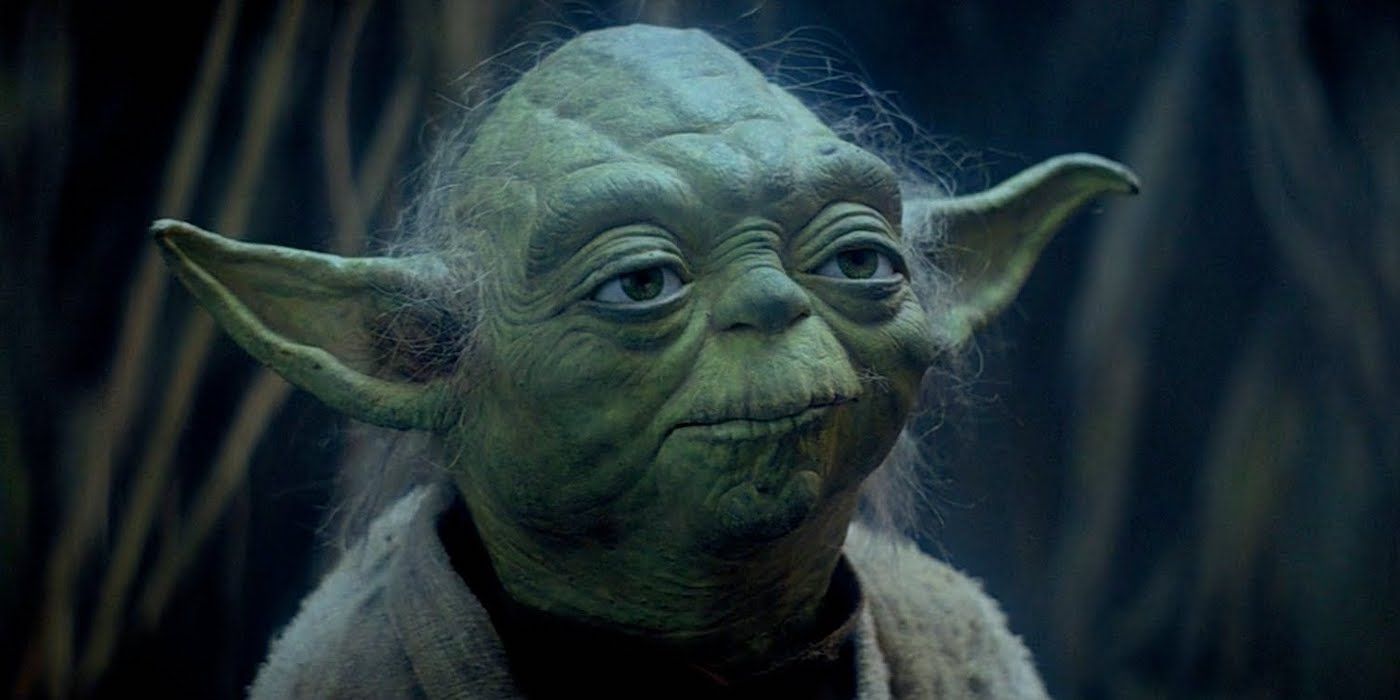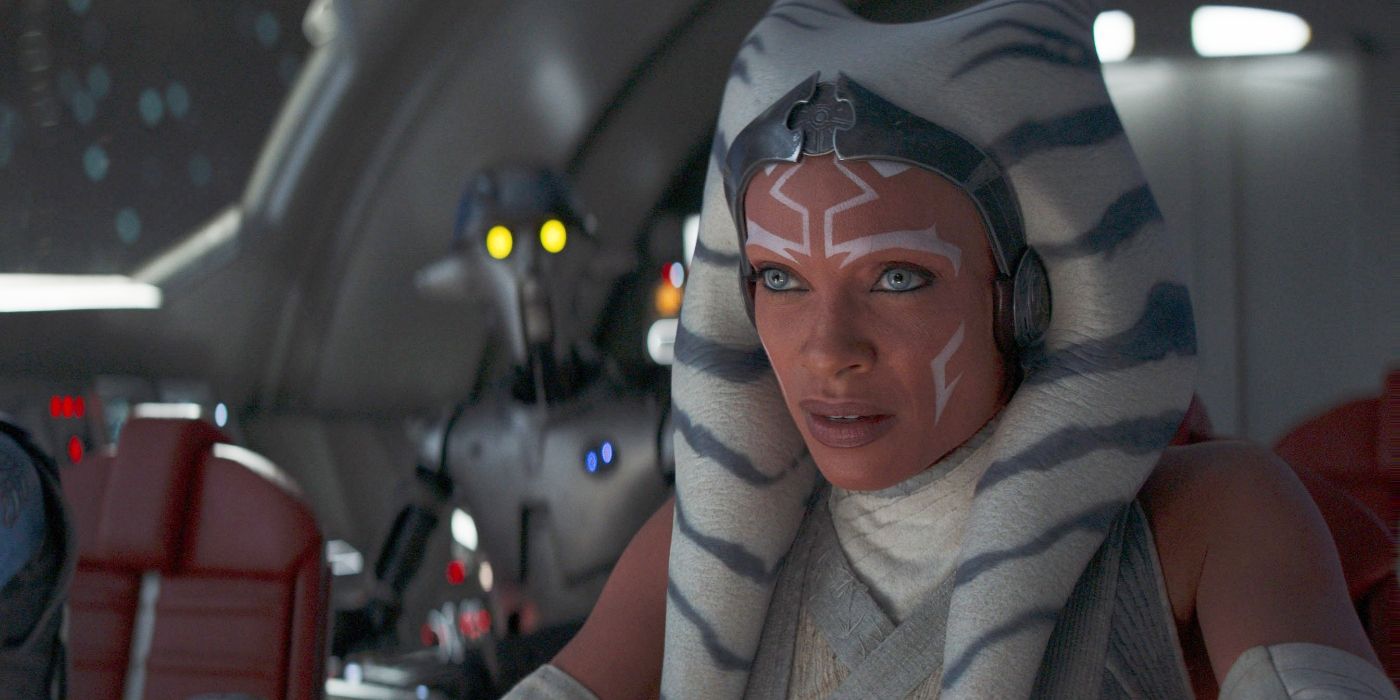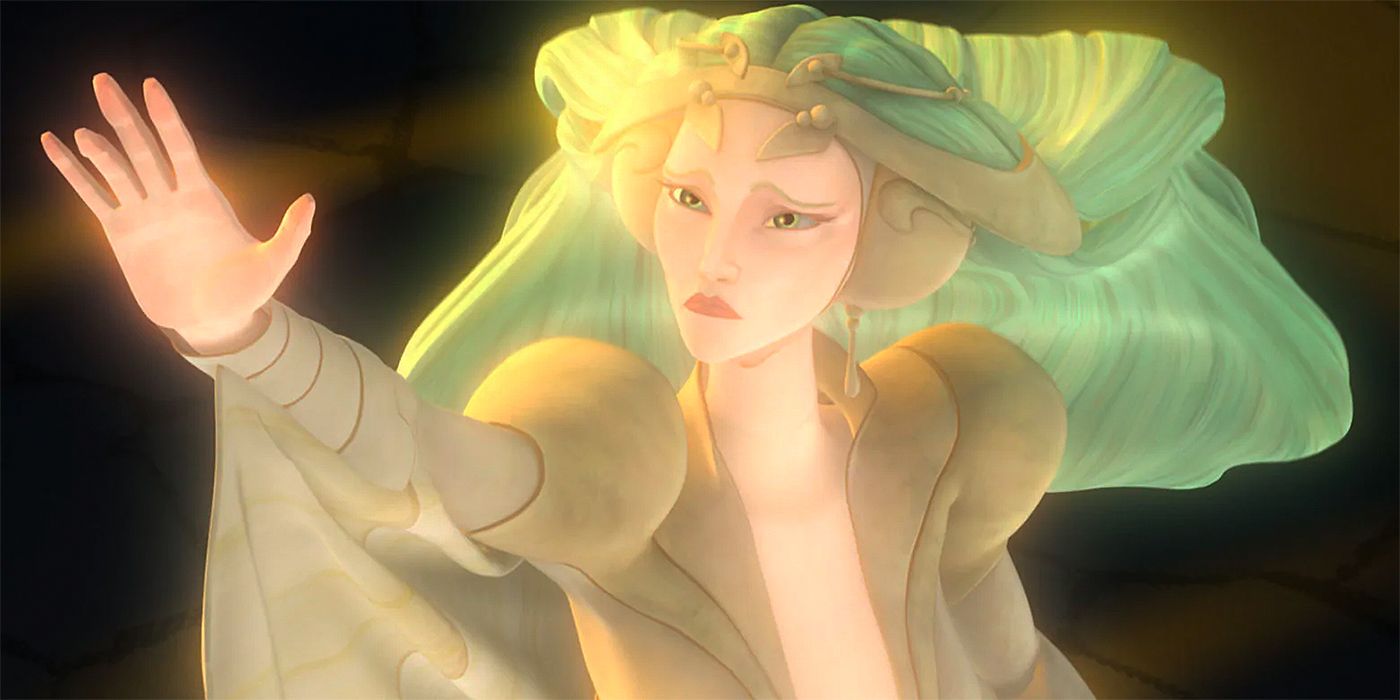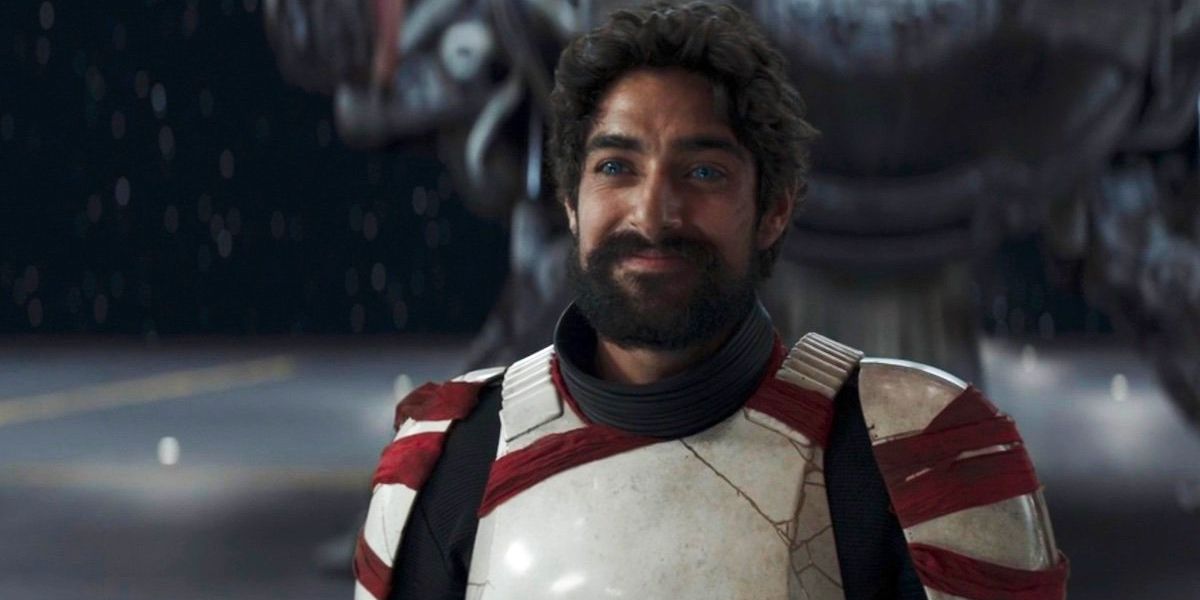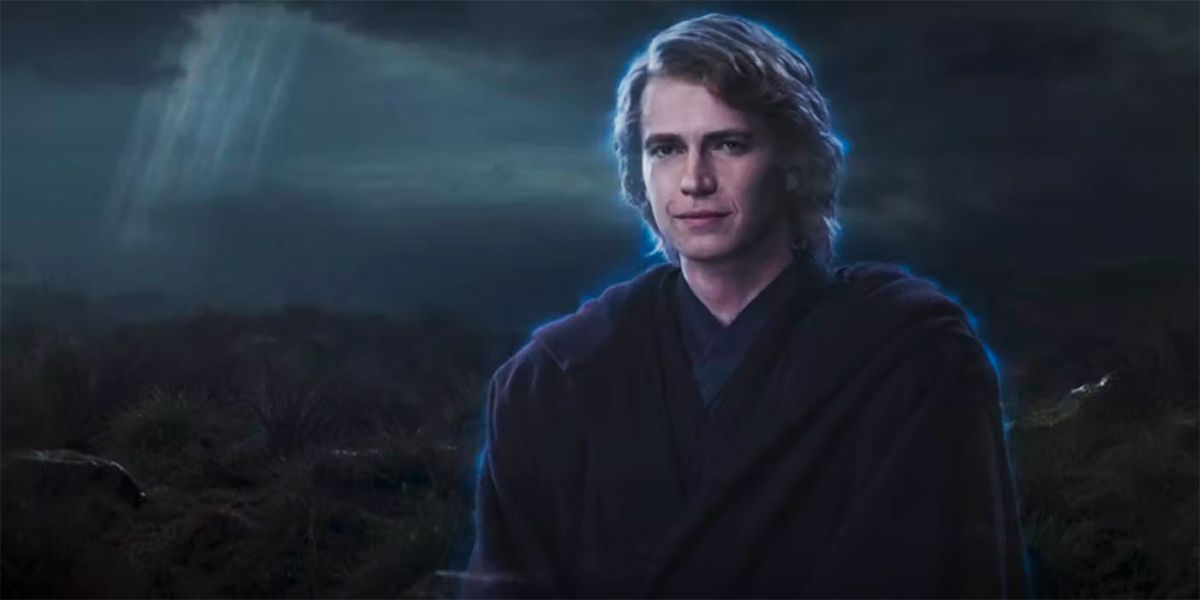Editor’s Note: The following contains spoilers for the Season 1 finale of Ahsoka.
The Big Picture
- The Ahsoka finale episode references C.S. Lewis’ The Lion, the Witch and the Wardrobe in its title, highlighting similar themes of war and unlikely heroes.
- The episode features the return of the Blade of Talzin, a fearsome weapon from Star Wars: The Clone Wars, wielded by Morgan Elsbeth in the live-action show.
- Various callbacks to Star Wars: Episode V — The Empire Strikes Back are seen, including references to Master Yoda’s teachings and a scene where Sabine mimics Luke Skywalker in a perilous situation.
The finale of Ahsoka has arrived. Our heroes are united and finally fighting together as Grand Admiral Thrawn (Lars Mikkelsen) attempts to flee the galaxy that’s served as his prison for many years. Much of the episode centers on the core trio — Ahsoka Tano (Rosario Dawson), Sabine Wren (Natasha Liu Bordizzo), and Ezra Bridger (Eman Esfandi) — entrenched in a slew of Thrawn’s strategically executed hazards. We don’t get more than a brief reminder that Baylan Skoll (Ray Stevenson) and his apprentice Shin Hati (Ivanna Sakhno) still exist, suggesting that there’s much more to come in this storyline, but there is a great deal of resolution and setup dropped along the way, accompanied by all the callbacks, references, and Easter eggs that you’ve come to expect.
For what it’s worth, the finale includes Sabine delivering a line — “Not alone.” — just before triumphantly coming to Ahsoka’s aid, and it so closely resembles the “Not alone” that Éomer (Karl Urban) delivers in The Lord of the Rings: The Two Towers. Having already witnessed multiple potential The Lord of the Rings references in previous episodes of Ahsoka, it’s surely a safe bet to say that Dave Filoni is a Middle-earth fan as well as a Star Wars nerd, much like many of us. Anyway, here are all the Ahsoka Easter eggs you may have missed!
The Jedi, The Witch, and The Warlord
The title of Ahsoka‘s finale episode, “The Jedi, The Witch, and The Warlord,” makes a clear reference to C.S. Lewis‘ fantasy novel, The Lion, the Witch and the Wardrobe. It’s an apt allusion not only because the main characters of Ahsoka hold titles with a similar cadence but also for the themes present in both works. The Lion, the Witch and the Wardrobe thrust its characters into a new, unexplored world amid the threat of war, and it explored themes of self-sacrifice, resurrection, and prophecy while pitting unmatched and unlikely heroes against evil forces bent on conquering.
The Blade of Talzin
Straight from the animated series Star Wars: The Clone Wars, the fearsome Blade of Talzin makes its return. This time summoned by the Great Mothers and gifted to Morgan Elsbeth (Diana Lee Inosanto), the weapon grants a great deal of power to its wielder, allowing Morgan Elsbeth to fight Ahsoka and her dual-wielded lightsabers head-on. Wreathed in a sinister green flame, The Blade of Talzin first appeared in The Clone Wars when it was used by the Nightsister Mother Talzin (voiced by Barbara Goodson) during her clash against Jedi Master Mace Windu (voiced by Terrence ‘T.C.’ Carson).
Caleb Dume’s Lightsaber
As Ezra is constructing a new lightsaber, in preparation for the battle ahead, he does so under the guidance of Huyang (David Tennant). Through their conversation, we get even more insight into just how old (and experienced) Huyang is, having been present in the early days of Ezra’s Jedi Master. Huyang even refers to him as Caleb, the name Ezra’s master went by when he was a Jedi Padawan, before becoming Kanan Jarrus. The lightsaber emitter that Huyang gives to Ezra matches that of Kanan, and Ezra now wields a weapon similar to his master’s in Star Wars Rebels.
Zombie Deathtroopers
The Dathomiri Great Mothers use their magic to resurrect Thrawn’s fallen Night Troopers, turning them into the horrific zombie Death Troopers. The Death Trooper has been adopted before in live-action Star Wars, when Rogue One gave the moniker to the stealthy, all-black soldiers working for Orson Krennic (Ben Mendelsohn). This is a wholly different breed of Death Trooper, however. The Star Wars Legends novels had their own zombie Death Troopers, and it looks like a version of them may finally be canon. For what it’s worth, the ones we got in Ahsoka are absolutely terrifying.
The ‘Ahsoka’ Finale References ‘The Empire Strikes Back’
At two points, this episode of Ahsoka references Star Wars: Episode V — The Empire Strikes Back. First, when Ahsoka and Sabine are catching up and reconciling in their own way, Sabine is asked by her Jedi Master if she’s kept up with her training. “I try,” Sabine answers, chuckling at her response, but then she corrects herself with a more affirmed “I do.” This calls back to the teachings of Master Yoda (Frank Oz) and the iconic mantra he bestowed upon Luke Skywalker (Mark Hamill) — “No, try not. Do. Or do not. There is no try.” A bit later, Sabine is the subject of another Empire callback, when she is pinned and almost bested by one of the Death Troopers. Still unsure of her Force sensitivity, Sabine reaches toward her lightsaber that lay on the ground, pulling for it with the same desperation that Luke did when he was strung upside-down in a wampa’s lair on Hoth.
Thrawn Calling Ahsoka a Ronin
“Ahsoka Tano, allow me to commend you on your efforts today,” Grand Admiral Thrawn transmits a message to Ahsoka as she chases after him, hoping to catch him before he jumps into intergalactic hyperspace. “You’ve been quite a worthy opponent. I regret we haven’t met face to face, and perhaps now we never shall. Still, I know you because I knew your Master.” Ahsoka’s face sinks grimly; you can feel the words pierce through her. “I concluded your strategies would be similar. One wonders just how similar you might become. Perhaps this is where a ronin such as you belongs.” The music swells as the Eye of Sion’s hyperdrives power up, and Thrawn simply adds, “Today, victory is mine. Long Live the Empire,” before successfully escaping into hyperspace and leaving Ahsoka stranded.
As a part of the select few who knew the true identity of Darth Vader, Thrawn firmly held proper caution over Ahsoka Tano, and the moves he made against her were as carefully chosen as his words. From the Japanese language, a ronin can be translated to a drifter; a ronin was a samurai who had become an outcast of sorts. They had no master and, in some cases, had lost a former master either by death or by losing favor. When used by Thrawn, the title is clearly meant to antagonize Ahsoka and stir the tumultuous feelings she has around her relation to her former Master.
Morai and the Mortis Gods
Having accepted their current fate, stranded on Peridea in a galaxy very far away, Ahsoka looks into the distance and sees an owl staring back at her before gracefully flying away. You couldn’t ask for a better omen. This is Morai, a spiritual owl-like bird called a convor, and she’s been a friend to Ahsoka since the era of animated Star Wars. Moreover, the Daughter was a Force wielder from the mystical world called Mortis, and Morai carried the life force of the Daughter within her. The daughter transferred her essence into the convor just before her death and subsequently began to watch over Ahsoka on her journeys.
Mortis is home to the ancient Mortis gods, whom many believe to be the predecessors of the Force. According to lore, they have a strong connection to the World Between Worlds, where Ahsoka found herself resuming training with Anakin (Hayden Christensen) earlier this season. At the end of the finale, we see Baylan Skoll standing before giant statues of the Mortis gods. Baylan’s true intentions have remained a mystery, but he is surely seeking some form of connection to these ancient beings.
Ezra Disguises Himself as a Stormtrooper
When Ezra (who has finally returned to his home galaxy) arrives at Home One and is greeted by Hera Syndulla (Mary Elizabeth Winstead) and her defensively ready New Republic fleet, Ezra is disguised in a set of Night Trooper armor. Evidently, he stole this aboard the Chimaera and used the garb to sneak away undetected, but it’s more than just a clever disguise. This calls back to Star Wars Rebels, in which a ruse like this was a common tactic of Ezra’s. He was an avid collector of enemy helmets, and he’d often disguise himself among Stormtrooper ranks to carry out missions, often as an Imperial scout or cadet. In “Breaking Ranks,” an early episode of Rebels‘ first season, Ezra went undercover as a Stormtrooper cadet to infiltrate the Imperial Academy
The Force Ghost of Anakin Skywalker
We’re ending this series of Ahsoka‘s Easter eggs by noting the not-at-all-hidden (but undeniably wonderful) moment that concluded the finale — the appearance of Anakin Skywalker’s Force ghost. It’s become a tradition for late Jedi Masters to visit their former Padawans at fitting moments, either at celebratory points of victory or moments of hardship when encouragement is needed, and it’s so nice to have Anakin watching over. Hayden Christensen’s version of Anakin’s Force ghost has appeared before when his image was retroactively added to a later edition of Star Wars: Episode VI — Return of the Jedi, controversially replacing Sebastian Shaw. Christensen’s Anakin is absolutely welcome this time around.

